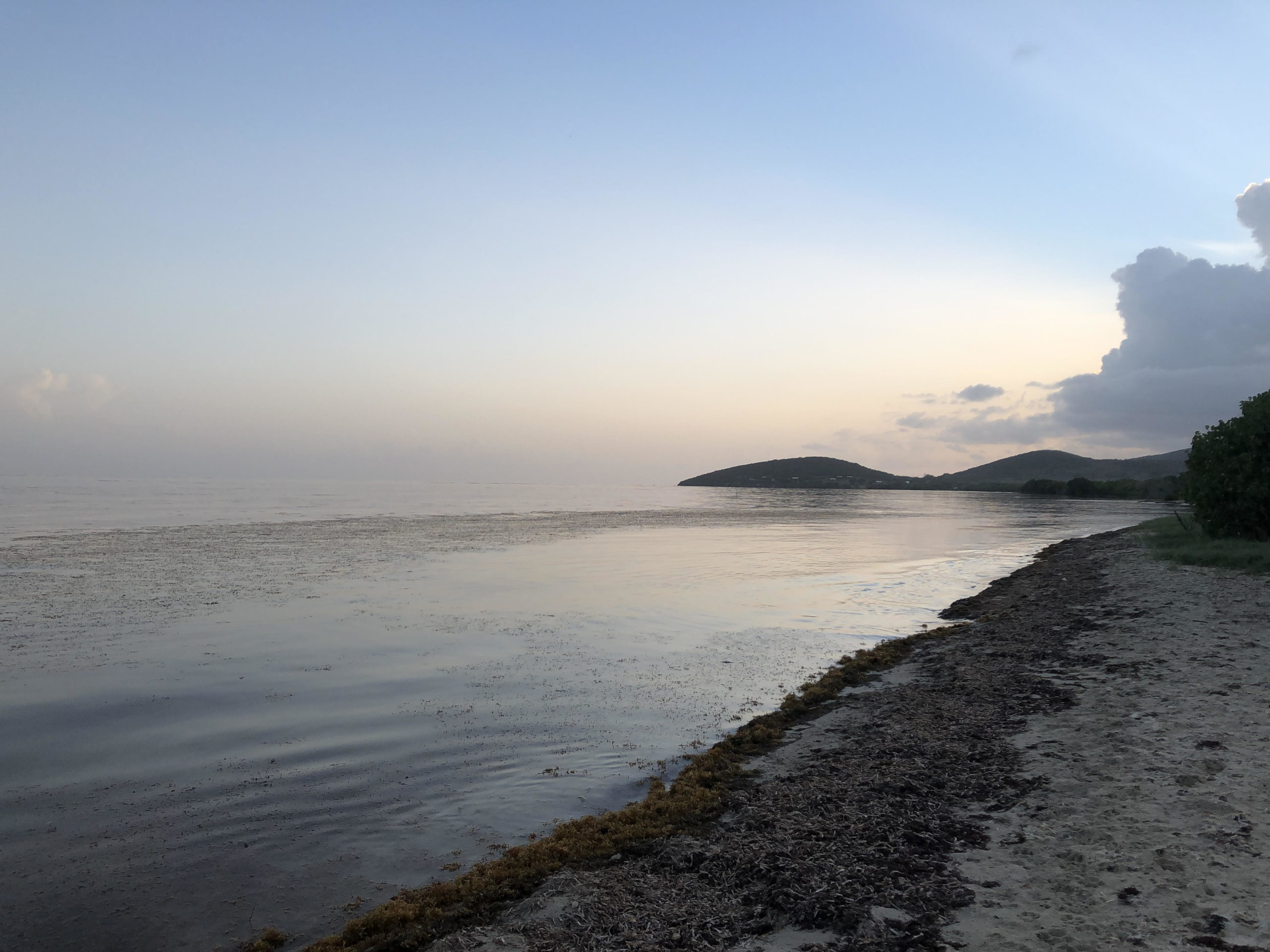
An open discussion on the future of Great Pond was held by the Department of Planning and National Resources and environmental firm Tysam Tech, LLC on Wednesday at the University of the Virgin Islands, Albert Sheen Campus, to a crowd of about 30 people. The goal of the meeting was to get the public’s feedback on the future vision of Great Pond.
Great Pond is located on the east end of St. Croix on South Shore Road. It was once a habitat for fishing; however, it has undergone some drastic changes throughout the years.
To discuss the current state of Great Pond and its future were experts from Tysam Tech and DPNR, along with engineers, marine biologists, and other professionals who served as panelists to provide an update and answer questions from the public.
“This kickoff meeting is a collaborative effort from everybody,” said Benjamin Keularts, engineer and project manager from Tysam Tech. “We are in the early stages and the idea is to get the public involved,” he said.
Keularts said that the project’s overall goal is to host a restoration design charrette with the inclusion of technical restoration design experts. The idea is to produce a restoration action plan that includes the design projects to restore or improve Great Pond as a potential reef fish nursery habitat to support food security in the U.S. Virgin Islands.
The action plan will be divided into four stages: gathering local data and knowledge, providing a greater understanding of the current conditions of Great Pond, and choosing the design options and the design.
Marine biologist Shamoy Bideau provided a glimpse through a PowerPoint into the transformation of Great Pond from the 1950s to present day. “Photos like these make it easier. We can go through the timeline and see what has changed.”
In one image, a 1988 Great Pond showed no mangroves, but in 1992 and 1999, there were some mangroves in the pond. Bideau said that in 2015, a drought that affected the island impacted Great Pond, given that there was little rainfall, and in 2017, the pond was impacted again pre- and post-Hurricane Maria. Today, Great Pond is in a poor state, but it has the capacity to accept water and flush it out.
Keularts said that according to their literature review, the impact on Great Pond is due to land development (changes to land cover/land use), solid waste disposal (illegal dumping), major storm events (short, high-intensity changes), commercial development (potential pollution runoff, increased volume), sargassum (reduction in water quality, mouth blockage), and climate change.
After the presentations, audience members had the opportunity to ask questions and provide input. They were then offered handouts and encouraged to draw their ideas on improving the pond.
The next meeting for the Great Pond Charette will take place at the University of the Virgin Islands Great Hall on March 22. A social event is planned for April 12 at the DPNR East End Marine Park.
Panel members included Marlon Hibbert, director of the Division of Coastal Zone Management, DPNR; Hilary Lohman, the Coastal Resilience coordinator, CZM; Kelcie Troutman, East End Marine Park coordinator, CZM; Trinity Austrie, director of Environmental Services for Tysam Tech; Benjamin Keularts environmental engineer and project manager for Tysam Tech; Shamoy Bideau, marine biologist, and project coordinator for Tysam Tech; Henry Tonnemacher, marine biologist; John Farchette, Great Pond expert; Brian Daley, field ecologist, and William Tobias, fish expert.
To view the full Great Pond Vision presentation, visit the DPNR Facebook page.


